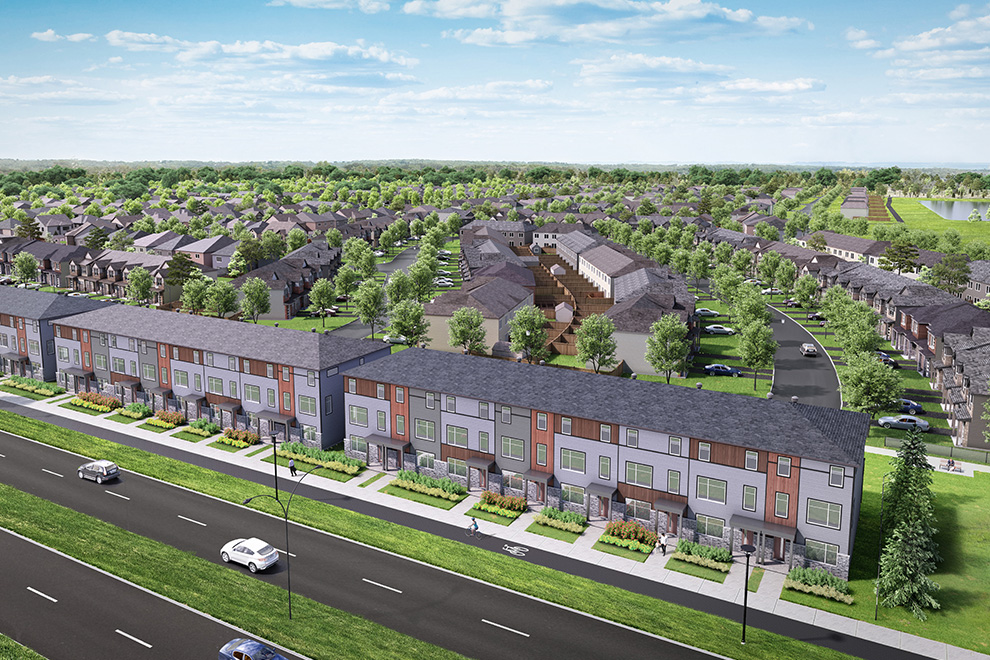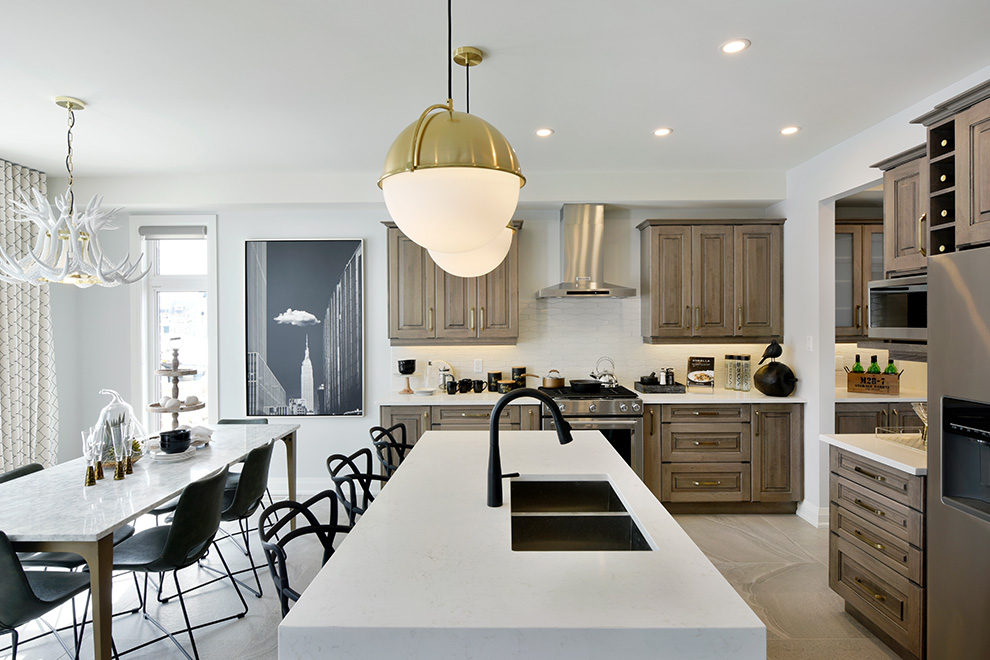Articles
How to Buy a New Home
Articles
Buying a Freehold Home
First-time buyers are often puzzled when they hear the term “freehold home.” What is it? How is it different from other homes? What’s involved in buying and owning a freehold home? Because freehold is the most popular type of dwelling, it’s important to understand what it is.
What "Freehold" means
Basically, it means the purchaser owns and controls the land and any structures on it, including a house, until he or she sells the property. In other words, a freehold home is what you’d see in most new home communities such as single family homes and townhomes. Ownership and use of a freehold property is, of course, subject to conditions of purchase (for example, you may agree not to paint your front door certain colours) as well as zoning, bylaw and other government regulations.

Freehold is all about variety
Because freehold defines the ownership and use of the property, not the kind of property, almost any type of home can be freehold. Minto Communities’ new homes offer a range of freehold options in tune with buyer needs, from two- and three-storey townhomes to detached bungalows and two-storey, single-family homes. Your Minto Communities sales representative will guide you in choosing the freehold home that’s right for you and your family.
What you own
With a freehold home, lot size is usually described in terms like “30-foot lot” or “36-foot lot.” Those numbers refer to the width of the lot at the front of the house. Your sales representative can tell you the depth of any particular lot. Remember that the city has a right-of-way, generally adjacent to the road, which means it owns some of the property you may regard as yours. The right of way houses infrastructure such as underground wiring and fire hydrants and allows the road to be widened if necessary. Although the city owns it, the homeowner is responsible for maintaining this land, including grass cutting and snow clearance.
Square footage
The square footage of a home is the liveable, indoor space. It does not include the garage and includes the basement only if that space is finished. Square footage is less important than how a home is laid out, and our homes are known for efficient floor plans and smart use of space.

Personalization
New, freehold homes usually come with a wide selection of upgrade options, from countertops to floors to wall colours. Upgrades help you personalize your home. And when it comes to the yard, it’s yours; if you love tulips and want a doghouse, go for it!
Changing lives
A freehold home from new home builders in Ottawa like Minto Communities can evolve as your family’s needs change. A new child, a home office, an unexpected illness: your home can usually be adapted to support these and other significant life changes. That makes it different from a condo, where changes are more limited, or a rental home.

Know your responsibilities
A freehold homeowner is responsible for all interior and exterior upkeep, including costs. That can run from annual inspections of the heating and cooling system to caring for your lawn and winterizing exterior water pipes. All new Minto Communities homes come with our Move-in and Home Care Guide, making it easy to maintain your home at peak performance.
Operating expenses
As the owner of a freehold home, you pay for all day-to-day operating expenses. Hydro, natural gas, water, phone and internet services: These are among the standard expenses when you buy a home, as are property and school board taxes. Your sales representative will help you calculate these costs so you can budget accordingly.

Add-ons
When you take possession of a freehold home in any of our new home communities, it’s almost ready to enjoy – just a few exterior items may be completed when the weather is appropriate. However, as with most new homes, there are a few things you’ll need to do yourself. Installing eavestroughs, for example, is the homeowner’s responsibility, as are additions such as a fence or interlocking stone. Minto Communities recommends you wait a year before making any changes to the yard, like fences, in case settling soil requires minor re-grading.
Unexpected expenses
Although having an emergency fund is always a good idea, the combination of Tarion, which administers Ontario’s new home warranty act, and Minto Communities’ high building standards mean it’s extremely unlikely you’d have to pay for unexpected repairs in the first several years of ownership. As with a car, you will eventually have to replace or repair some components, but even your roof, which takes a beating in the Canadian climate, shouldn’t need attention for at least 15 years.
Occupancy
In most cases, it takes about 18 months from the time you sign your purchase agreement until you move into your new, freehold home. This is the time when you review design options and select upgrades, wind down your lease if you are renting, and get everything in place for your move. If you want faster occupancy, we may have some move-in soon, or inventory, homes in most of our new home communities in Ottawa. Already under construction, these homes may still be at a stage where you can make design choices.
Whether you wait for your occupancy or take advantage of a move-in soon option, Minto Communities’ freehold homes offer you a range of floor plans and housing styles in modern, convenient communities across the city.
